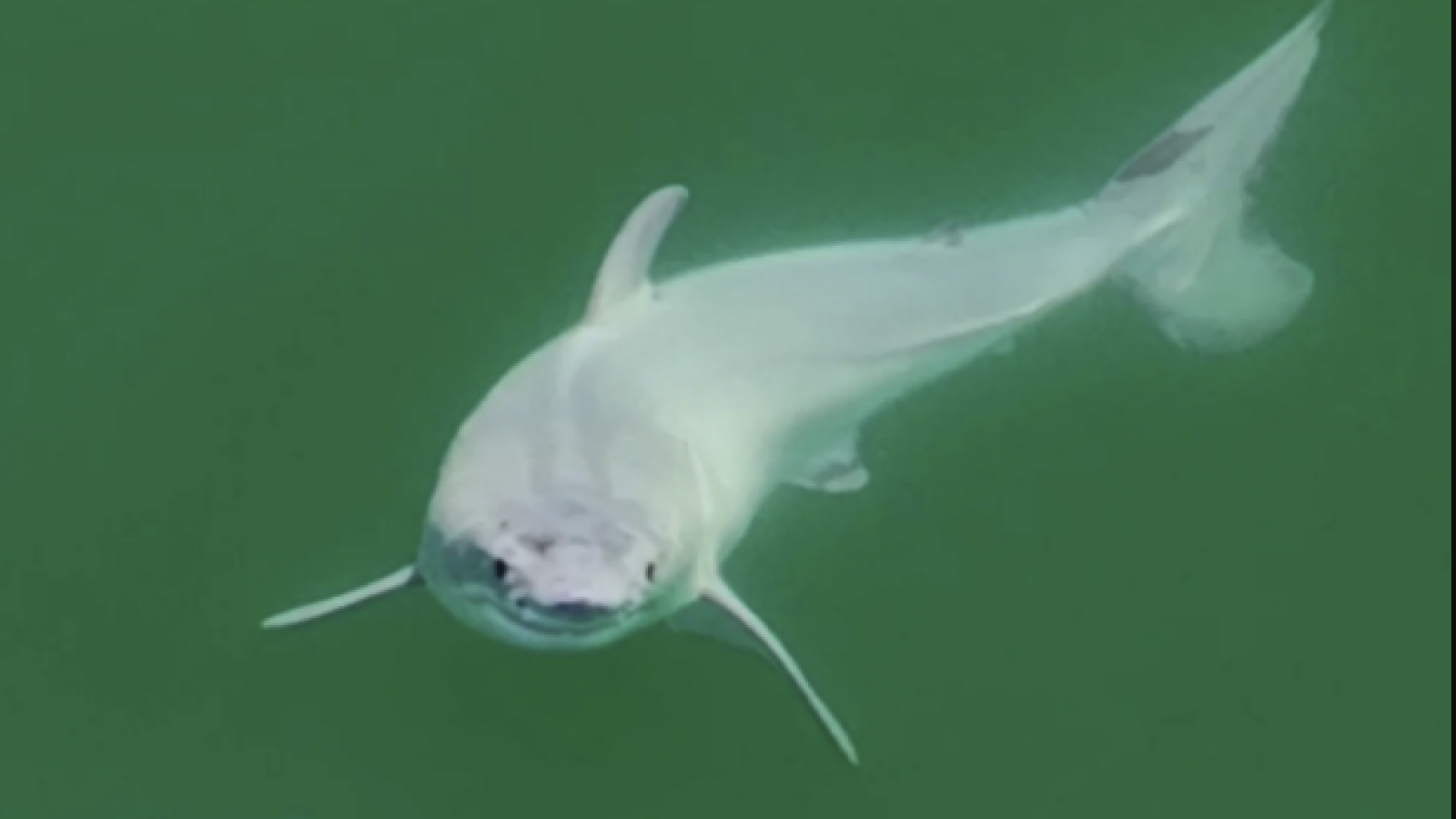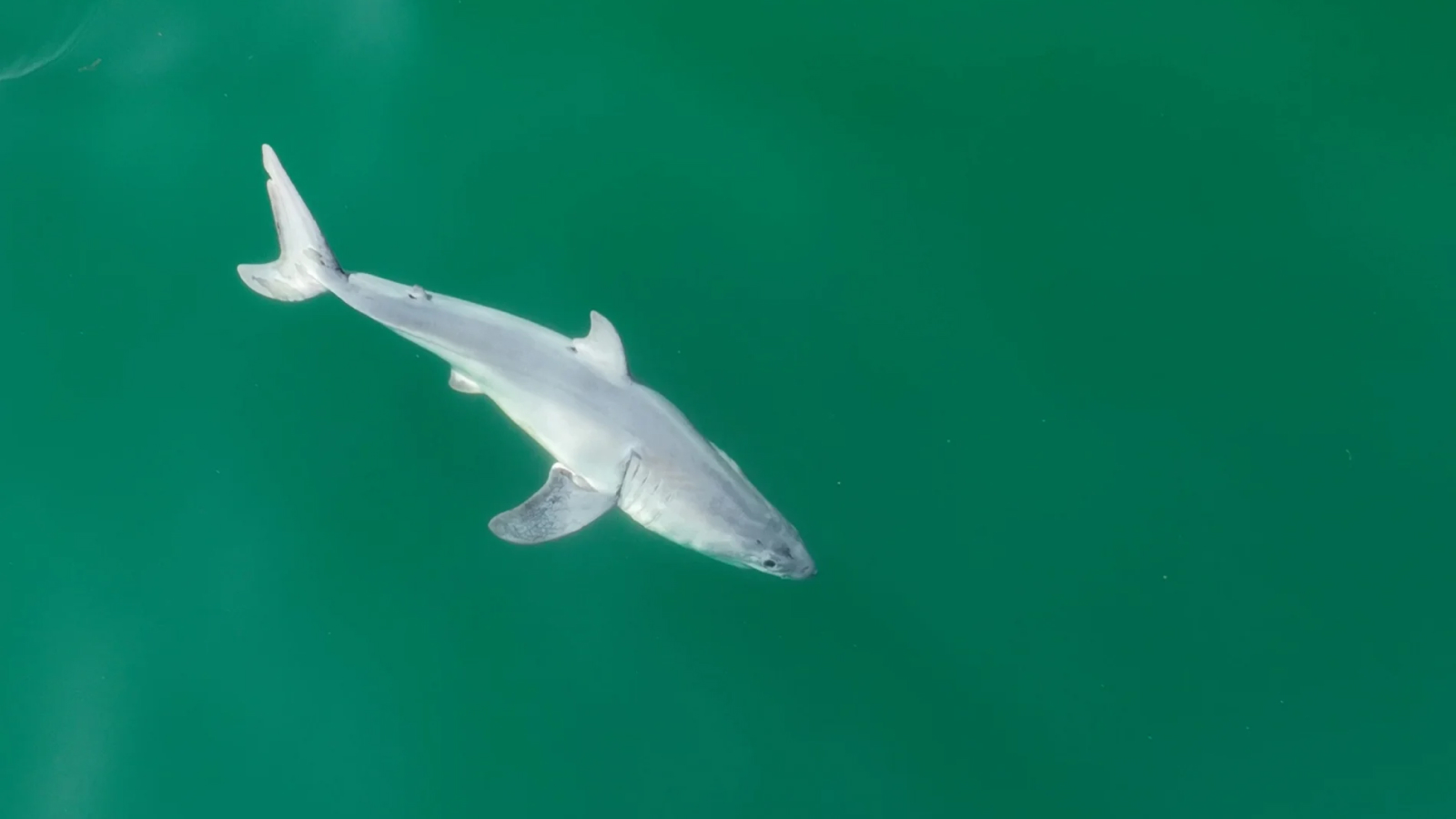A newborn great white shark has been spotted in the wild for the first time, researchers have announced.
The ghostly white pup was photographed off the coast of California on July 9, 2023 and was nothing like any great white shark documented before.
Wildlife filmmaker Carlos Gauna and University of California, Riverside biology doctoral student Phillip Sternes, who found the unusual pup, noticed the 5-foot (1.5 meters) shark was thin, short and had rounded fins — a trait usually seen in embryos. It was also entirely white. They documented the sighting in a study published Jan. 29 in the journal Environmental Biology of Fishes.

Great whites (Carcharodon carcharias) are the largest predatory sharks in the world today and can grow to be up to 21 feet (6.4 m) long as adults. The researchers think the pup was just hours old: "Maybe one day old at most," Sternes said in a statement.
The unique sighting, which was captured via drone, could help answer one of the biggest mysteries about great white sharks. "Where white sharks give birth is one of the holy grails of shark science. No one has ever been able to pinpoint where they are born, nor has anyone seen a newborn baby shark alive," Gauna said in the statement. "There have been dead white sharks found inside deceased pregnant mothers. But nothing like this."

Related: Great white sharks are hanging out in the twilight zone and scientists don't know why
On closer inspection, they noticed that the pup was covered in a white film that the pup was shedding as it swam. Great white sharks usually have countershading on their bodies — a gray back and white underside — but the authors think the baby shark was white because pregnant female white sharks produce a milky fluid called "uterine milk" for her embryos to consume.
"I believe what we saw was the baby shedding the intrauterine milk," Sternes said. However, the authors noted it could also be caused by an unknown skin condition.
This potential newborn was spotted around 1,000 feet (305 m) from the beach. Large, apparently pregnant, females have been seen in that location before, indicating they may give birth in the area.
"This may well be the first evidence we have of a pup in the wild, making this a definitive birthing location," Sternes said, although the authors noted that some scientists believe white sharks may give birth further offshore.
Knowing where great white babies are born is important for the conservation of the species, which is listed as vulnerable to extinction. "Further research is needed to confirm these waters are indeed a great white breeding ground. But if it does, we would want lawmakers to step in and protect these waters to help white sharks keep thriving," Sternes said.







